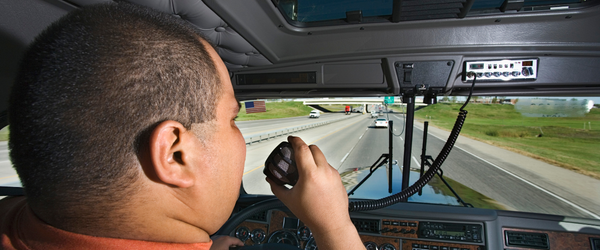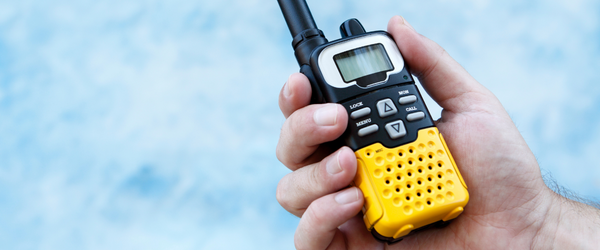Whereas some radios require an FCC license to function legally, there’s additionally a variety of private two-way radios obtainable that function on particular frequencies and energy ranges, exempting them from the licensing requirement. These license free radios embrace CB, Household Radio Service (FRS), Multi-use Radio Service (MURS), Industrial Scientific and Medical (ISM) and Low Energy Radio Service (LPRS) provide a easy and efficient method for people and households to speak over brief distances.
Which Radios Do Not Require an FCC License?
Not all two-way radios require an FCC license. Listed here are the 4 varieties of two-way radios that don’t require an FCC license and can be utilized proper out of the field.
- CB (Residents Band)
- Household Radio Service (FRS)
- Multi-Use Radio Service (MURS)
- Industrial, Scienific, Medical Radios (ISM)
- Low Energy Radio Service (LPRS)
Why is a License Not Required?
The ability output (watts) of the radio will decide if you happen to want an FCC license. Two-way radios which can be under 2 watts can be utilized license free. License free, low powered radios are used for brief vary communication sometimes 0.5 to some miles. Any radio above 2 watts would require an FCC license to function.
CB Radios
Residents Band (CB) radios don’t require an FCC license as a result of they’re used for short-distance communication. CB radios function on 26.965 MHz and 27.405 MHz frequency bands. CB radios function on 40 channels which can be shared and aren’t particular to any individual or group. Such a radio is well-liked amongst truckers to speak with one another on the street.

FRS Radios (Household Radio Service)
FRS Radios, which stand for Household Radio Service, don’t require an FCC License. These are small handheld radios resembling a walkie talkie and used for brief distance communications. FRS two-way radios have 22 channels that function on 462-467 MHz vary. FRS radios can vary from 0.5 watts to 2 watts and have a communication vary of <.5 mile on channels 8-14 whereas channels 1-7 and 15-22 can provide a wider vary of communication relying on sure circumstances.
Because the identify suggests, FRS radios are used for communication amongst household, associates, and group actions. In style FRS radios are these from Midland, DeWalt, Baofeng, choose Motorola (Talkabout), or walkie talkies you discover at Walmart. There are headsets made by 3M Peltor just like the Litecom FRS headset which has a in-built FRS two-way radio, which additionally doesn’t require a license.

Multi-Use Radio Service (MURS)
Multi-Use Radio Service (MURS) don’t require a license. Much like the FRS two-way radio, this radio can be used for brief vary distance and are small handhelds like a walkie talkie. With this radio, you’ll be able to count on a communication vary of lower than just a few miles. Multi-Use Radio Service (MURS) operates on channels in 151-154 MHz frequency vary.
MURS vs FRS Two-Manner Radio
Whereas MURS and FRS two-way radios are each used for brief vary communications and appear to be a typical walkie talkie, they’re completely different. Firstly, FRS radios are well-liked amongst household and seen a variety of occasions as “toys” whereas MURS two-way radios aren’t marketed as such. This implies the channels on MURS are much less crowded in comparison with FRS channels.
Second, MURS operates on VHF which is best used rural, open air, and open terrain whereas FRS operates on UHF which is finest used indoors like in and round buildings.
Lastly, MURS has a greater vary. FRS radios have a variety of lower than .5 to 2 miles relying on which channel you might be on, whereas MURS radio can transmit just a few miles. MURS radios will also be used with an exterior antenna providing you with an prolonged vary of as much as 10 miles or so, one thing that you may’t do with an FRS radio.
900 Mhz Industrial, Scientific, Medical (ISM)
The FCC has put aside 900 MHz frequency bands for unlicensed ISM (industrial, scientific, and medical) purposes. Which means you received’t want a license to make use of these radios. Simply because the identify suggests, ISM purposes are used largely for industrial, scientific, and medical purposes. 900 MHz ISM band frequency ranges from 902-928 MHz and is finest used when there are obstructions resembling bushes and buildings within the line of signal. Like the opposite radios on this listing, 900 MHz are sometimes 1-2 watts which implies it doesn’t fall within the requirement for an FCC License.
In style 900 MHz ISM radios embrace the Motorola DTR and DLR Collection two-way radios.
Low Energy Radio Service (LPRS)
Low Energy Radio Service (LPRS) is a one-way brief distance communication system that doesn’t require an FCC License. LPRS supplies auditory help to folks with disabilities or who want language translations and is used largely in schooling, well being care, and regulation enforcement monitoring settings. LPRS makes use of 260 channels with a frequency of 216-217.
What Radios Do Require an FCC License?
- GMRS
- Beginner Radio Service (HAM Radio)
Two-Manner Radios listed as Normal Cell Radio Service (GMRS) require an FCC license to function. GMRS radios require a license as a result of they transmit over 2 watts and have a wider communication vary of 1 to 25 miles.
Beginner Radio Service or HAM radios require an novice operator license grant from the FCC. This course of is a little bit completely different than what is required for GMRS radios. For this license grant, you’ll must go an examination administered by a volunteer examiner who will decide which operator class you might be most certified for by testing your skills. For extra data on getting a license grant, learn this from the FCC.
Why an FCC License is Vital
FCC Licenses are used to ensure frequencies usually are not overlapping with different channels. When you’ve got an FCC license, it provides you your very personal set of frequencies to function on with out the chance of interference. If utilizing an unlicensed two-way radio, you’ll be able to intervene with somebody’s registered frequencies which is illegitimate and can lead to fines and penalties.
Do not Run the Threat
If utilizing a two-way radio that requires an FCC license, it’s vital to get one earlier than you begin speaking. When working with out an FCC license you run the chance of hefty fines, imprisonment, and even have your gear confiscated. An FCC license is $35 and is legitimate for 10 years, a small funding to save lots of you from the trouble.
How Can I Get Assist Securing an FCC License?
Have a GMRS radio that requires an FCC license? At First Supply Wi-fi, we may help you get one. Go to our making use of for an FCC license web page for extra data.




